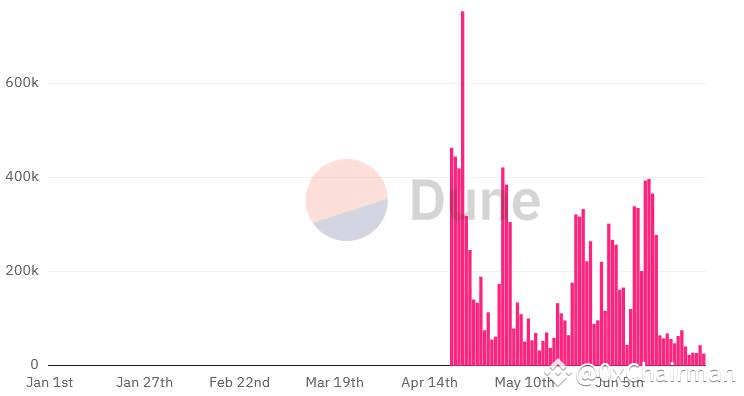Runes, a new digital protocol embedded in the Bitcoin blockchain, witnessed a record-low transaction count, shedding 88% from this month’s peak. Bitcoin miners earned less than 2 Bitcoins from Runes in the preceding 6 days. Miners’ earnings endured a significant decrease from a record high of 844 Bitcoins recorded on April 24th.
Also read: Ethereum ETF and Solana ETF could crush ETH and SOL’s price, investors look into RCOF
Raw data from Dune Analytics shows that between June 9th and June 15th, transaction count peaked at an average of 331,040. The data also shows the transaction count reduced by almost 90% between June 22nd and June 28th, averaging 37,820. Dune Analytics data indicates that on June 24th, the transaction count was 23,238, the lowest since the protocol launched on April 20th.

Decline in Runes transactions affecting miner earnings
In the past week, the protocol’s transactions have accounted for 11.1% of Bitcoin’s transactions. The sharp decline in the Runes transaction count has a ripple effect on BTC miner charges. In the past six days, Bitcoin miner fees have had a record low of less than 2 from a record high of 884 Bitcoin recorded on April 24th.

Data from Luxor Technology’s Hashrate Index showed that the Bitcoin hash price also dropped by 52% to a near-all-time low on June 20th. Bitcoin miners remain profitable despite the declining hash price. The Bitcoin hash price is a key element in gauging miner revenue.
Runes developers insist the protocol is a better alternative to similar platforms launching tokens on the Bitcoin network, including Bitcoin Ordinals inscriptions. These devs cite its eco-friendly characteristics as the main contributor to its success.
Other Bitcoin protocols in decline
Other Bitcoin-based protocols, Ordinals inscriptions, and BRC-20 have also recorded a decline in transaction count as well as Bitcoin miner fees. Their numbers are much lower than those of Runes. Transaction fees from these protocols managed to cover the 50% reduction in block subsidy a few days after Bitcoin’s April 20 halving event.
Bitcoin protocols provide an additional income stream to Bitcoin miners. Miners initially relied entirely on peer-to-peer BTC transactions for revenue. However, after April’s halving event, trading volumes have been unstable, and the protocols’ performances have largely declined.
Also read: 40% of South Korean university students are interested in crypto investing, study finds
The first announcement of Bitcoin Runes’ launch surfaced in September 2023. The project proceeded to launch on Bitcoin’s halving date, April 20th. Runes was developed by Casey Rodarmor.
Casey also participated in the creation of Ordinals inscriptions for non-fungible tokens on the Bitcoin network. The Runes protocol serves as a platform for launching fungible tokens on the Bitcoin blockchain and works similarly to ERC-20 tokens on the Ethereum blockchain.
Cryptopolitan reporting by Collins J. Okoth





